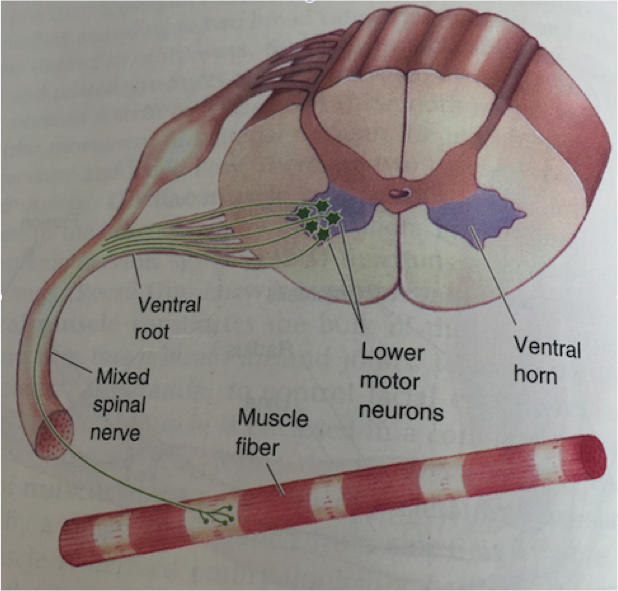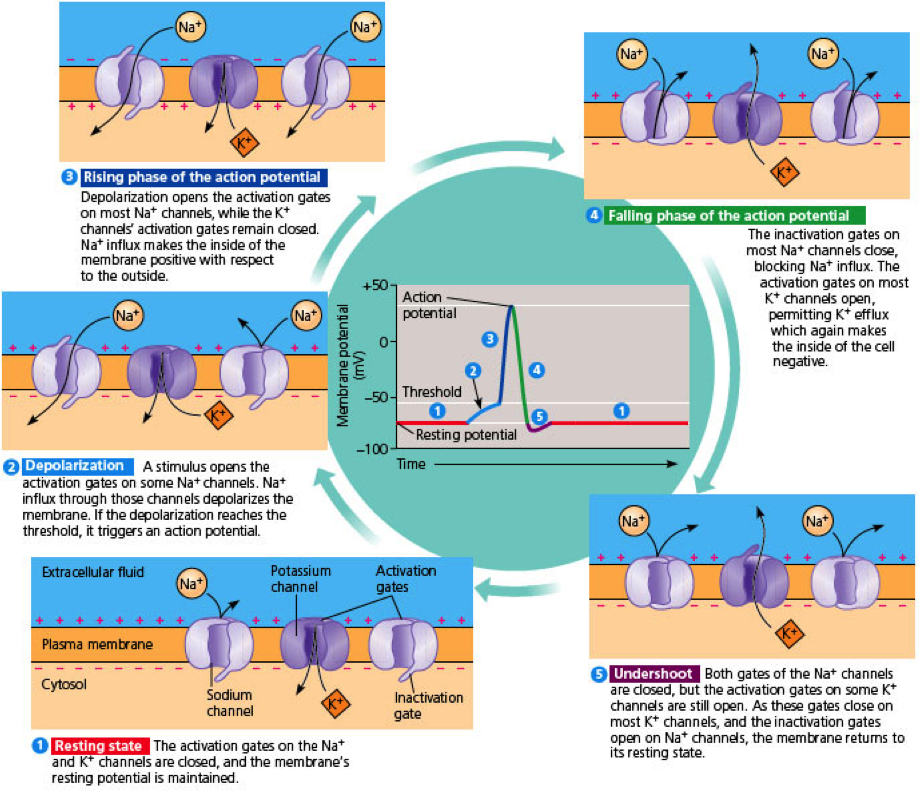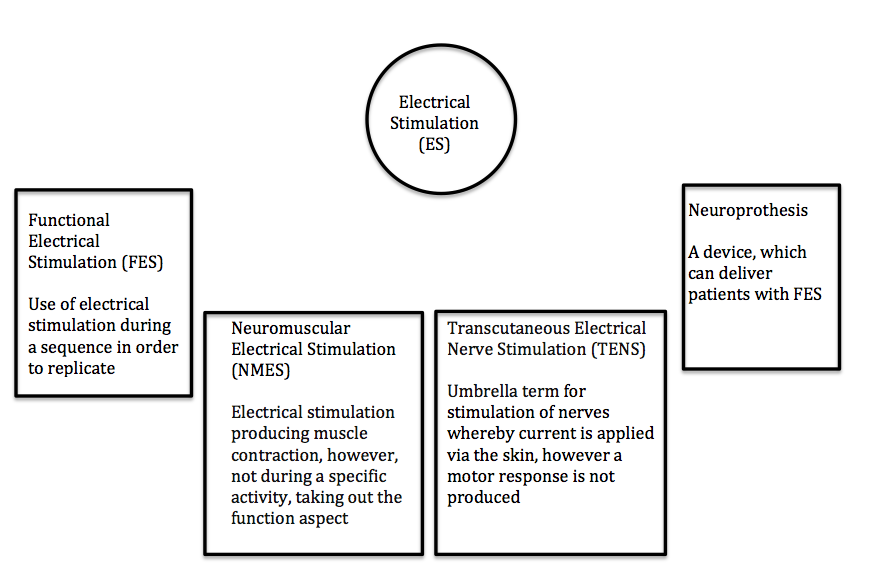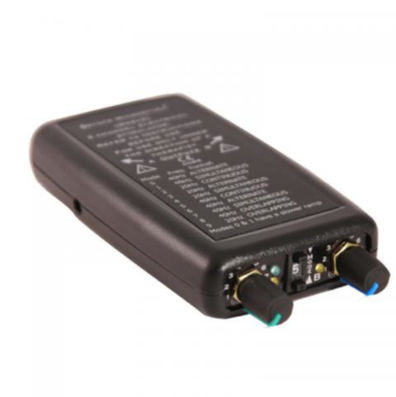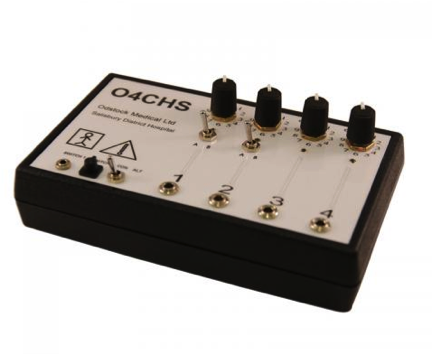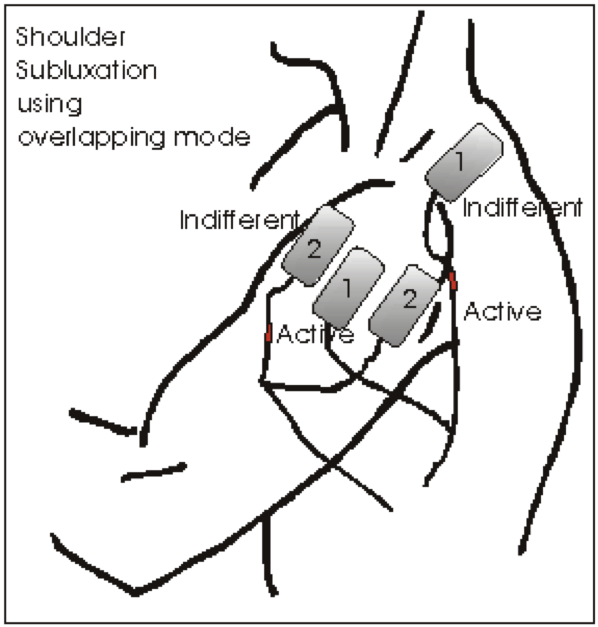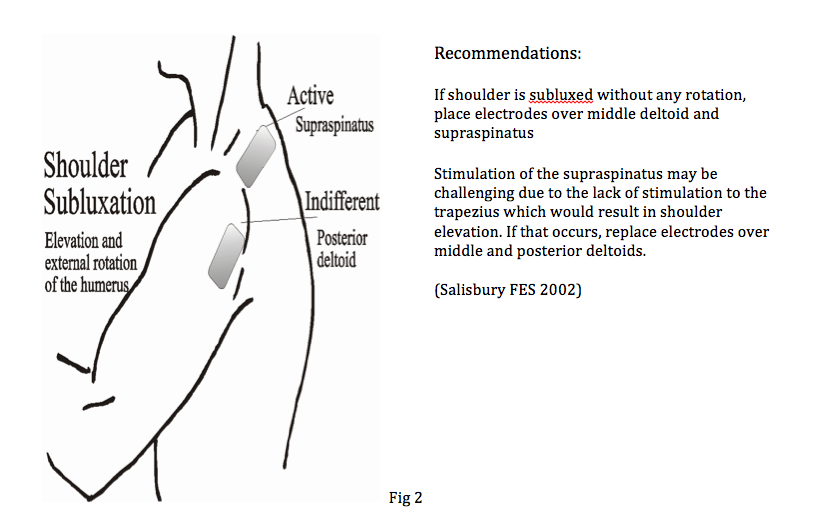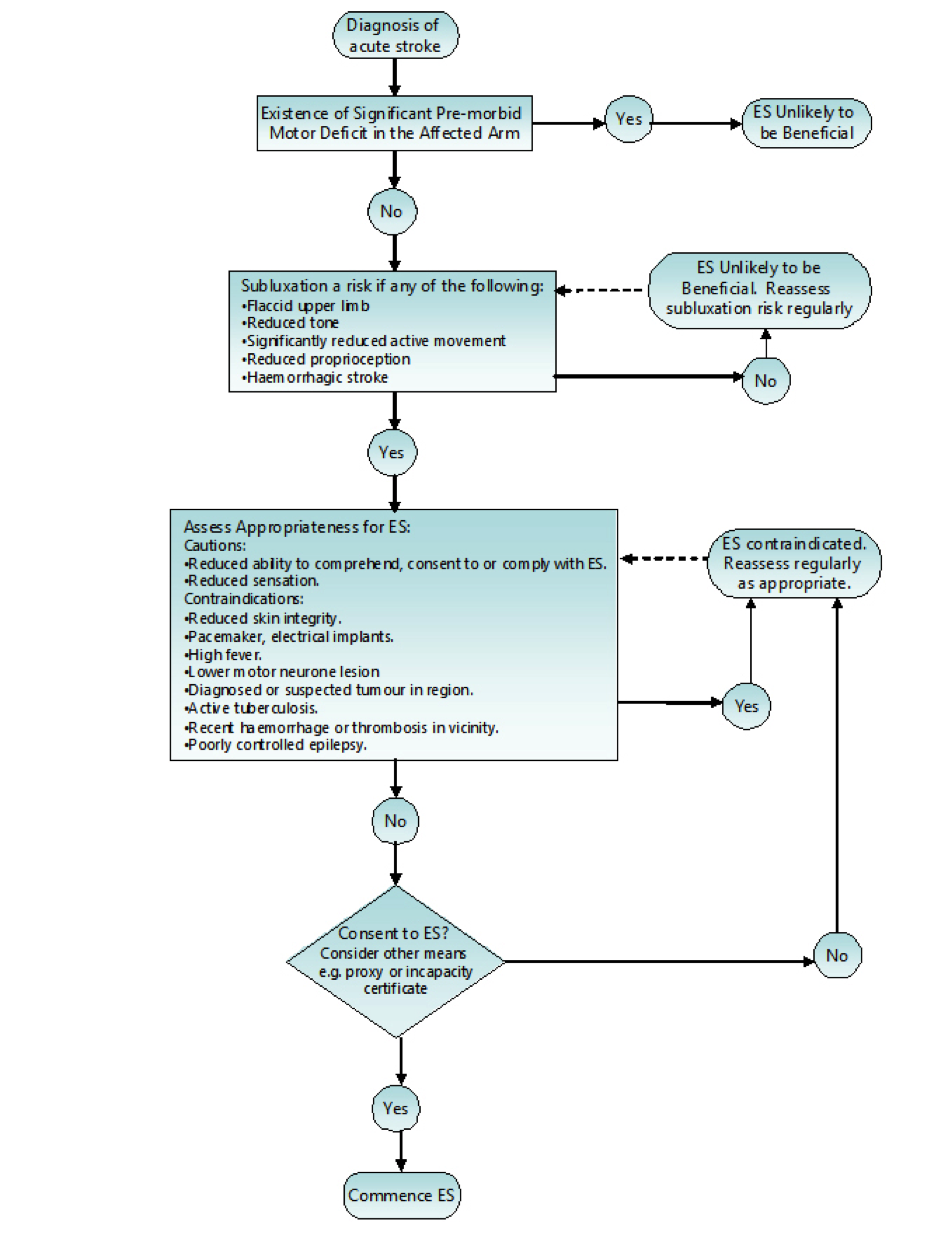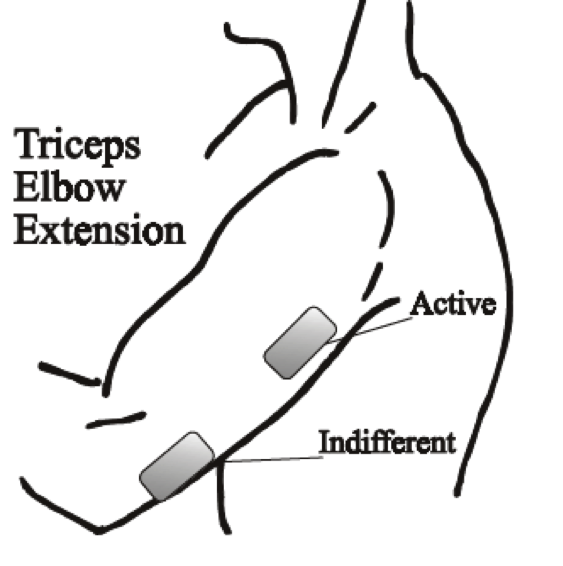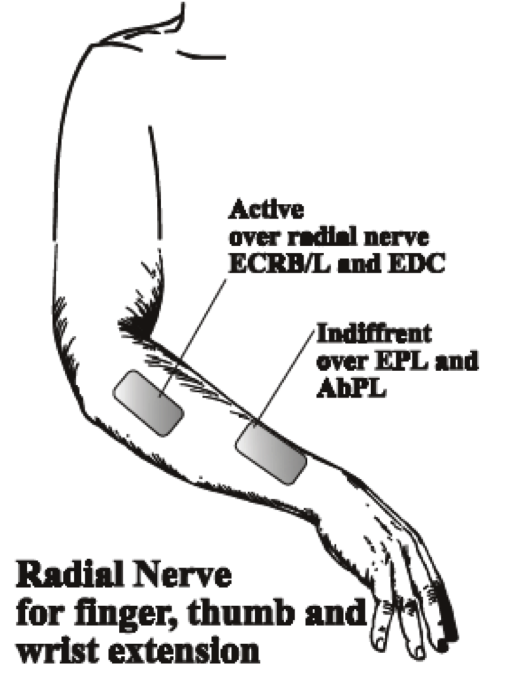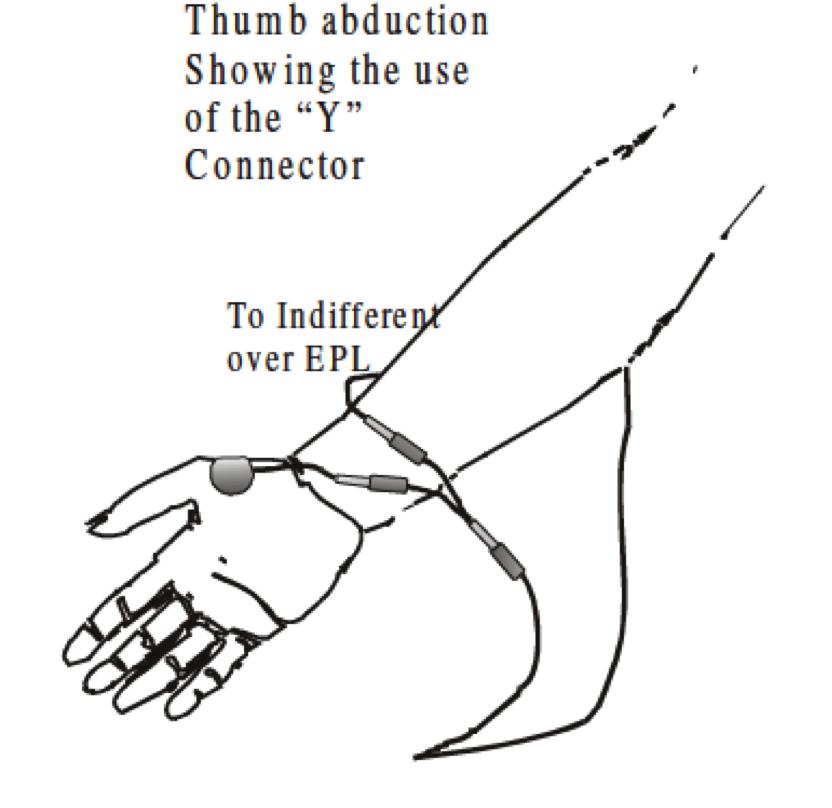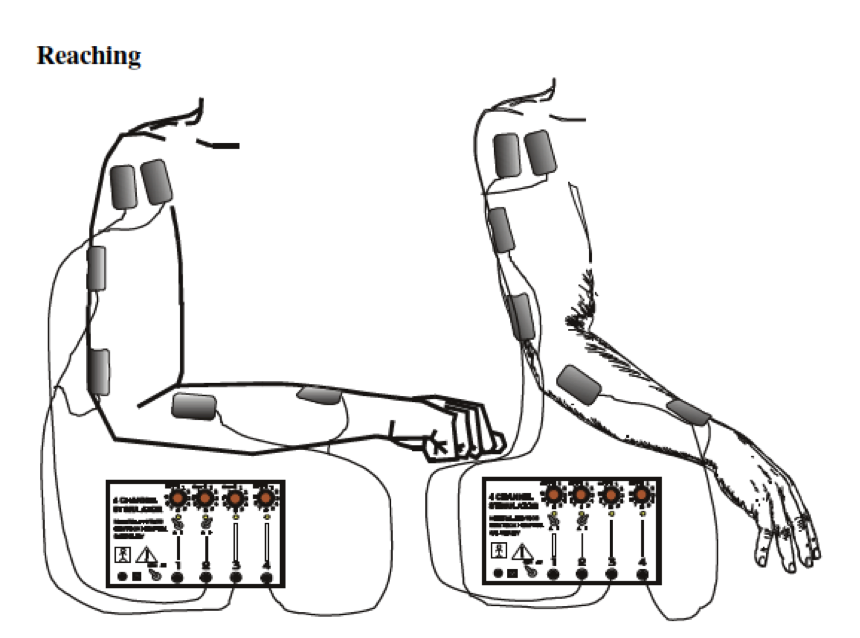Electrical Stimulation - Its role in upper limb recovery post-stroke
Original Editor - Your name will be added here if you created the original content for this page.
Top Contributors - Rebecca Graham, Grant Burns, Craig Philip, Joshua Tan, Hannah Little, Rucha Gadgil, 127.0.0.1, Kim Jackson, Admin, Rachael Lowe, Venugopal Pawar, Cindy John-Chu, Carina Therese Magtibay, Dinu Dixon, Evan Thomas and Jane Hislop
Introduction and Learning Outcomes[edit | edit source]
Welcome to this online learning resource on the use of functional electrical stimulation (FES) to support recovery of upper limb following a stroke. This interactive learning package has been created by a small group of final year Physiotherapy students from Queen Margaret University as part of the Contemporary and Emerging Issues in Physiotherapy module.
This resource aims:
to provide an interactive learning package for final year students and newly qualified physiotherapists to develop their knowledge and understanding of FES for upper limb recovery following a stroke, and
to provide a resource of key literature and signposting to further reading and content.
Learning Outcomes
The following learning outcomes (LO) have been constructed to support competencies expected of a newly qualified (Band 5) physiotherapist role (ref xxxx). A balance of theory, policy and evidence-base, as well more practical aspects for application of FES has been integrated into the LOs. This choice was based on discussion and feedback with tutors and peers.
By the end of this learning package the user should be able:
LO1: to appraise the guidelines and underpinning literature on the use of FES in stroke upper limb recovery and relate this to your current or future clinical practice setting.
LO2: to discuss the principles, applications and parameters of FES in relation to stroke upper limb recovery.
LO3: to justify the consideration of FES in stroke upper limb assessment and intervention planning.
Layout and Approach
This package should take approximately ten hours to work through however the sections have been designed in a way which enables users to dip in and out to suit their needs. At the start of each section a brief outline of what is covered will be outlined and linked to the above learning outcomes.
A key design of the package is to be interactive. While synthesis and summary of key information has been provided, the user will gain greater benefit by engaging with the directed reading, activities, short quizzes and case study that have been developed to support a deeper learning experience.
Also a range of material has been considered in the design of this package to try and suit most learning styles (VARK xxxx). If you find that a section does not suit then please review the additional resource section at the bottom for alternative options.
The following describes the main sections found below in this resource package.
Introduction
What is FES
When should I use FES
How do I use FES
General
Shoulder Subluxation
Motor control
Conclusion
Further Resources
Context - Why this Topic?
Stroke plays a large part and burden on society (Stroke Association 2015) and is currently the 4th largest cause of mortality in the UK (Stroke Association 2015). Although trends show decreased mortality rates over the last 20 years, it is still the leading cause of adult disability. The UK has approximately 1.2 million stroke survivors with half experiencing disability and 77% with upper limb difficulties (Stroke Association 2015).
In the UK the over 65s population is estimated to grow by 25% by 2020, which is a demographic where stroke incidence is higher. This could potentially lead to even greater numbers of survivors requiring support and rehabilitation from health care professions such as Physiotherapy.
Maintaining and improving people’s functional abilities is a key goal for physiotherapists working with those who have a stroke and FES is a technology that offers the potential to support this (ref xxxx). This goal aligns with current Scottish health and wellbeing policy aimed at driving improved health outcomes for patients (The Scottish Government 2015).
What is Functional Electrical Stimulation[edit | edit source]
Functional electrical stimulation (FES) is an assistive technology that works by stimulating peripheral nerves and muscles of a weakened part of the body. It activates contraction and relaxation of the muscles that have been affected by an upper motor neuron lesion. The muscles are triggered to contract during an activity, in order to improve function of completing these tasks. FES engages the patient and delivers feedback of a sensory and visual nature, which is said to be beneficial for stroke patients during their recovery and should promote motor re-learning (Dobkin and Dorsch 2013; Kawashima et al. 2013; Howlett et al. 2015; Odstock medical 2015).
Alongside stroke, conditions whereby FES may be effective include Cerebral Palsy, Parkinson’s Disease, Multiple Sclerosis and Spincal Cord Injuires if this is above T12, all of which being upper motor neuron injuries (Odstock medical 2006).
FES is not suitable for lower motor neuron lesions as lower motor neurons directly innervate skeletal muscles via the ventral horn of the spinal cord and are needed for voluntary muscle contraction. They contain both sensory and motor fibres (Odstock Medical 2006; Bear et al. 2007).
(Bear et al. 2007)
How it works/Physiology
Motor units are electrically stimulated by depolarization of motor axons, or terminal motor nerve braches. When depolarization reaches threshold an action potential occurs due to sodium flowing from extracellular to intracellular space, leading to the contraction of muscle (Neo stroke network 2015).
In FES it is the nerves that are stimulated rather than muscle, as they require a lesser current of that which would be needed to trigger muscles directly. Factors including distance from electrode to nerve fibre, size of motor unit, and surrounding tissue will all have an impact on the number and type of motor units activated.
If FES is effective muscle fibres will change in structure over the course of treatment with type II glycolytic fibres converting to type I oxidative skeletal muscle fibres due to improved resistance to fatigue (Gorman and Peckham 2014). Type II fibres create greater forces however fatigue more quickly, whereas type I fibres produce lesser force however take longer to fatigue (Sheffler and Chae 2007).
Ion Movement and Action Potential (Dundee Med Student Notes 2012)
If you require a refresher on the structure and function of motor neurons, visit this short youtube clip to familiarise yourself.
For further revision of physiology please visit the book ‘Principles of Physiology’ by Levy, Koeppen and Stantion (2006).
Chapters of interest:
- chapter 3 – Generation and Conduction of Action Potential (Howard C. Kutchai)
- chapter 4 – Synaptic Transmission (Howard C. Kutchai)
- chapter 9 – Motor System (William D. Willis, Jr)
A limitation of FES is that muscles may fatigue (Thrasher et al. 2005). It is reported that the higher frequency that is selected, the quicker muscle fatigue will set in. Therefore to solve this issue a lower frequency should be selected. (reference)
There is argument for and against whether muscle strengthening can occur once fatigue has set in. It has been suggested that when fatigued, that no advantages can be gained from additional stimulation and therefore you should try to prevent fatigue. The opposite view however suggests that strengthening will only be achieved is the muscle fibre is worked to its maximum.
It appears that strengthening can occur if fatigue is within the muscle fibres due to cellular processes being activated, however is fatigue has resulted from neurotransmitter depletion or propogation failure, the muscle will not be strengthened as the fibre is not being stimulated (Robertson et al. 2006).
Response to continual stimulation may reduce due to the action potential decreasing the distance reached over membrane of the muscle fibre. (reference)
FES System/Electrodes
FES systems include three mechanisms: the control, an electrical stimulator and electrodes which connects the FES with the nervous system (Gorman and Peckham 2014).
The electrical current activates the nerves via electrodes. These can be surface electrodes meaning they are placed on the skin which is the most common and detailed further below; percutaneous electrodes, which penetrate through the skin into the muscle or completely implanted electrodes, which receive stimulation from an external unit.
Surface electrodes
As well as stimulating muscle, surface electrodes may also be used to achieve a reflex action. Surface electrodes appear the most practical however there can be issue with disuse due to the sensory component, which may make stimulation of deeper muscles more difficult. Implanted and percutaneous electrodes can resolve some of these issues but the cost and practicality should be taken into consideration (Ewins and Durham 2005).
Parameters of FES needed when using surface electrodes can differ depending on factors such as material of the electrodes, placement and surface area. An issue with surface electrodes is that there can be difficulty contracting small individual muscles, and to activate deeper muscles, those more superficical must first be activated. Surface electrodes may also cause pain for some patients and it is reported that subcutaneous electrodes are more pleasant (Popaviz 2003).
Two electrodes should always be used however these can be unipolar or bipolar. Unipolar is the term for when one electrode is more active than another, due to their sizes. Biploar electrode placement means they are both the same size meaning the current at each site will be equal (Robertson 2006).
To further familiarise and gain greater understanding regarding use of electrdoes, please read pages 50-58 of Electrotherapy Explained – Princicples and Practice (Robertson et al. 2006).
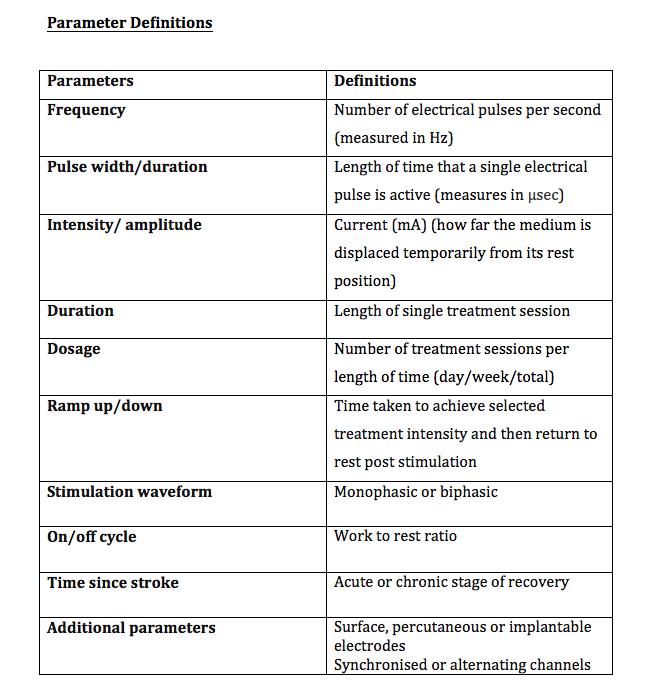
(Allan and Goodman 2014) (SSAHPF 2014)
Specific parameters for the use of ES within shoulder subluxation and motor control will be detailed below in their specific sections.
Whats Avaialble?
Odstock medical is one of the main suppliers of FES devices, which vary in design and paramters available. The odstock 4 channel stimulator kit and microstim 2V2 kit are both simple to use in order to allow regular activity in the home environment. They have this in common however differ in output as the 4 channel stimulator can provide alternating or continuous output, unlike the microstim.
The odstock website has further images and descriptions of the FES kits available. Please visit the website to familiarise with the options available. The link is as follows: http://www.odstockmedical.com
Microstim 2V2 Kit (Odstock Medical 2015) '
Channel Stimulation Kit (Odstock Medical 2015)
Quiz
1. Which of these best describes functional electrical stimulation?
a – electrical current where no motor response is stimulated
b – electrical stimulation during a specific task
c – device or system that provides electrotherapy
2. Action potentials occur due to movement of which ion into intracellular space
a – sodium
b - potassium
c - chlorine
3. Which of these best describes type 2 muscle fibres?
a – strong and fatigue resistant
b – weak and fatigue resistant
c – strong and fatigue quickly
4. Frequency is defined as
a - number of electrical pulses per second
b - time taken to achieve selected treatment intensity
c - length of time that a single electrical pulse is active
5. Pulse width is defined as
a - time taken to achieve selected treatment intensity
b - length of time that a single electrical pulse is active
c - number of electrical pulses per second
6. FES has an effect in
a – lower motor neuron lesions
b – upper motor neuron lesions
c - both
7. Which of these conditions would not benefit from FES?
a – spinal cord injury (T3)
b- motor neuron disease
c – parkinsons disease
When should I use Functional Electrical Stimulation[edit | edit source]
How do I use Functional Electrical Stimulation[edit | edit source]
General Considerations[edit | edit source]
Shoulder Subluxation[edit | edit source]
This section will cover:
• Shoulder subluxation in stroke?
• How does FES aid in Shoulder Subluxation?
• Application
• Dosage and Parameters
• Contraindications
• Outcome measures
• Summary
• Key note
• Evidence based?
• Case study
• Further Resources
Shoulder subluxation in stroke?
Shoulder subluxation is very commonly found in patients with extreme muscle weakeness and limb inactivity and mainly due to the stretching effects of gravity on inactive soft tissues (Carr and Shepard 2003).
Shoulder subluxation happens due to the vulnerability of the glenohumeral joint and when the muscles around the shoulder socket are unable to hold the humerus in place, adding the further assistance of gravity, it pulls the humerus into an abnormal position.
A reliable measure to test for a subluxed shoulder, is by using callipers and measuring the subacromial space between the acromion and humeral head (Boyd & Torrance 1992).
For further information of shoulder subluxation in stroke please read Carr and Shepard pgs…
Definition:
Shoulder subluxation is described as inferior glenohumeral joint displacement and is a very commmon secondary musculoskeletal impairment in the upper limb post stroke (Ada and Foongchomcheay 2002).
Incidence of shoulder subluxation:
The incidence of shoulder subluxation occurs in 17 – 81% of patients following a stroke and has been reported to be the main cause of shoulder complications (Manigandan et al. 2014). Shoulder subluxation has a high occurance rate in hemiplegic patients.
Take 10 mins to read the pathophysiology of Shoulder Subluxation in Stroke:
➢ Section 11.3
➢ Pages: 6 – 11
➢ http://www.ebrsr.com/sites/default/files/Chapter11_HemiplegicShoulder_FINAL__16ed.pdf
How does FES aid in Shoulder Subluxation?
There is strong evidence in supporting FES in clinical practice that there are benefits to using FES in treating patients with shoulder subluxation whereby it directly stimulates the nerves and not the muscle fibres and thus achieving functional movement.
Electrical stimulation should also be started as early as possible i.e. initiated acutely post stroke as part of best practice for those patients who are at risk of developing subluxation due to paralysis of shoulder muscles after stroke (Ada and Foongchomcheay 2002). It also has its benefits for patients in the chronic stages of stroke for instance reducing the distance between the acromion and the humeral head (EBRSR 2013).
FES also seems to helps improve function, muscle tone, joint alignment and sensory deficits (Price & Pandyan 2001).
Functional electrical stimulation is applied to structures that aid in maintaining the position of the head of humerus in the glenoid fossa such as the supraspinatus, deltoid muscles (Vafadar et al. 2014). Long head of biceps should be taken into consideration for patients post stroke to help minimise the risk of shoulder subluxation (Manigandan et al. 2014).
Stimulation of the supraspinatus alone would be inadequate to maintain the humerus position in the shoulder (Kobayashi et. al. 1999)
FES may aid in minimizing shoulder subluxation and could further be used as a preventive measure. However it does not seem to reduce pain (EBRSR 2013).
Application:
To apply FES to the upper limb to aid in reduction of shoulder subluxation, you need to think about the structures that are involved and the movement you would want to illicit. Therefore, certain considerations must be considered before application.
Below are some illustrations of FES being used with slight variations.
The settings below are by Odstock Medical Limited who is one of the main distributors of FES in the UK.
Reducing Shoulder Subluxation
2 pairs of electrodes required
Placement of pair 1: Supraspinatus & Middle of Deltoids
Placement of pair 2: Anterior & Posterior Deltoids
All 4 electrodes should fit under placed hand over patient’s shoulder. When adjusting current to relocate position of humerus, avoid extensive shoulder abduction.
Reduction of shoulder subluxation with external rotation
This is suitable for patients with significant anterior subluxation/ internal rotation of humerus.
2 pairs of electrodes required
Placement of pair 1: Supraspinatus & Middle of Deltoids
Placement of pair 2: Teres Minor & Posterior Deltoids
You can adjust which electrodes is active or indifferent depending on your patient’s needs. This set up should relocate the humerus more posteriorly.
Current levels maybe too high when shoulder is brought into elevation and you should adjust the current where appropriate to achieve humeral relocation.
Take 5 minutes to watch the tutorial on shoulder subluxation and skip video to 1.45 to commence shoulder subluxation video.
https://www.youtube.com/watch?v=yWMzzY_Zrv0#t=436
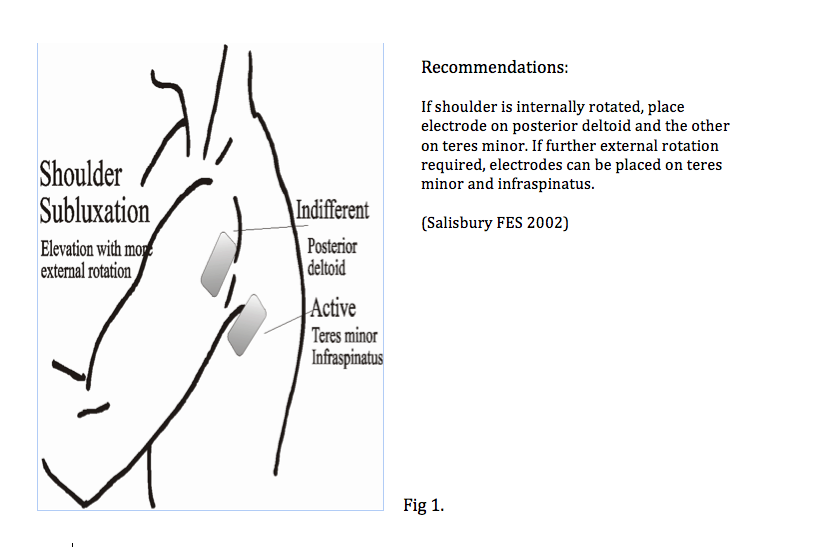
For Figures 1 & 2 choose which electrode to make active (Strongest effect) i.e. if active electrode over teres minor causing extensive external rotation, reverse the polarity.
Dual channels of stimulation can be applied or alternation of electrode positions.
Take note:
1. Different electrode sizes available, use whereby appropriate.
2. Electrodes should strictly be a one patient use.
Dosage and Parameters:
Scottish Stroke AHP forum has also reported that subluxation appears to arise during the flaccid period in which is the first 3 weeks post stroke. Shoulder subluxation is less likely to occur if the supraspinatus has developed some movement.
Further evidence has also shown that early application of FES preferably within the first 48 hours post stroke is vital in preventing shoulder subluxation (Linn et. al. 1999, Fil et. al. 2011).
FES treatments also show no further improvements after twelve months and the results remained the same 12 months later (Chantraine et. al. (1999)).
Before commencing an FES treatment on a patient, it is important to consider the types of parameter settings available and deciding upon the most appropriate setting for your patient. The different types of settings used can provoke various responses from patients.
Types of parameters to consider:
1. Frequency
2. Pulse width
3. Amplitude (intensity)
4. Duration of treatment
5. Dosage i.e. number of treatments a week
6. Ramp/ Ramp down
7. Type of wave form
8. On/off cycle
9. Structures stimulated
10. Time post stroke
Take 5 minutes to read the recommended parameters of FES pages 17 – 18 from the Scottish Stroke AHP forum
For more in depth information on the different types of settings, please read pages 75 – 77 from the Scottish Stroke AHP forum
The link to this document can be found below:
http://www.chss.org.uk/documents/2014/10/electrical-stimulation-consensus-statement-ssahpf-pdf.pdf
Below is a FES pathway in the usage FES to prevent shoulder subluxation post acute stroke
Outcome Measures:
Motor Assessment Scale (MAS) is one of the outcome measures used to gauge a patient’s functional ability and thus feed backing to clinicians if FES is necessary. However, there is limited evidence to suggest that it is the outcome measure to be used.
To familiar yourself with the motor assessment scale, click here.
http://www.rehabmeasures.org/Lists/Admin%20fields/Attachments/924/Motor_Assessment_Scale.pdf
In Summary:
The use of FES as a treatment towards potential and those having shoulder subluxation post stroke is advocated (Intercollegiate Stroke Working Party 2012, Scottish Intercollegiate Guidelines Network (SIGN) June 2010). Furthermore, early application of FES in adjunct of traditional therapeutic treatments have proven to be more superior to conventional therapy alone. Subluxation tends to occur within the flaccid period in the first 3 weeks post stroke.
The main muscles targeted for stimulation are supraspinatus and deltoids however the evidence varies with regards to which deltoid fibers prove most beneficial. It may depend on the type of subluxation your patient may have i.e. anterior or inferior subluxation. FES should be commenced with one hour per day initially and subsequently increased to 6 hours per day (Ada and Foongchomcheay (2002).
The recommended dosage of FES is that patients should continue on FES till they have a score of more than four on the motor assessment scale (MAS) (Ada and Foongchomcheay (2002). However this was in adjust with improved levels of motor control. Correspondingly, patients who scored two or more on the motor assessment scale (MAS) did not develop shoulder subluxation Linn et. al. (1999). Therefore this could be used as an outcome measure when treating patients.
Key Note:
• Clinical application and parameters for shoulder subluxation and motor control vary and are different.
• Early application of FES may result in a substantial decrease in subluxation as compared to late/chronic stages of subluxation.
Evidence based/Conclusion:
There are increasingly more evidence supporting the use of FES in shoulder subluxation post stroke. In the meantime, there is good quality of evidence to show that FES should be considered during the acute stages of stroke being it either used for the prevention or treatment of subluxation. However, further research is required towards the feasibilities of the device’s parameters due to the variations of study designs and treatment constraints used.
Case Study:
To review your learning, we have developed a case study of Mr Moses to help synthesis the information previously mentioned.
Mr Moses is a 70 year old retired male living with his wife. He suffered a left sided stroke three weeks ago and has been diagnosed with right sided hemiplegia. It was noted through an initial physiotherapy assessment that due to the hemiplegia there was a significant reduction of active shoulder movement and upon further examination of the shoulder the patient was showing signs of subluxation. However a definite diagnosis of the shoulder being subluxed was never completed.
In addition, due to the stroke, Mr Mose’s cognition has been affected whereby his wife now has power of attorney. Medical staff also noted that the patient’s overall skin condition is relatively poor in adjunct with oedema of his right hand. A colleague has approached you to help with the diagnosis and for some advice due to the lack of improvements from conventional physiotherapy treatments.
You are the clinical specialist in treating patients with FES. Would FES be beneficial towards this patient?
Activity:
Looking back at the case study above;
• Can you name a reliable measure to aid in measuring a subluxed shoulder?
Answer: Callipers by measuring the subacromial space between the acromion and humeral head.
• Identify some contraindications or cautions if any?
Answer: Poor skin condition, Oedema of right hand.
• Could you recommend a potential treatment parameter for Mr Moses?
Answer: See recommended parameters of FES pages 17 – 18 from the Scottish Stroke AHP forum.
• Which muscles would you place the electrodes on and why?
Answer: Supraspinatus, Middle or Posterior deltoid due to these muscles being the main structures in maintaining humeral position in the glenoid fossa.
8 months on, Mr Moses has made significant recovery and is being reviewed for discharge. However, his wife is concerned about him regressing upon returning home due to the benefits of FES, which he has gained while in hospital and would like to continue progressing. She has approached you to enquire about purchasing an FES device independently to continue in Mr Mose’s rehabilitation and self management.
• Now have a think about some of the requirements you would expect from an FES device, which would enable a patient to use at home.
Answer: Easy to use, Inexpensive, Easy to charge, Suitable for unsupervised use, Light weight and compact, Easily cleaned, Not for single person use.
• Having read about the possible interventions and evidence, reflect upon a situation whereby, a patient has informed you that he would like to purchase an FES device for home use even though he has been using FES for more than a year. What advice would you give this patient and why?
Answer: I would advice this patient to reconsider buying an FES device as the evidence states that there is minimal to no change in improvements past the 12 month period. Therefore there would not be much benefit in buying the device due to the limited recovery of shoulder subluxation post stroke.
Motor Control and Recovery[edit | edit source]
In this section the reader will have the opportunity to develop their knowledge and understanding relating to FES and it’s uses for motor control recovery. The section is split into 4 main areas allowing the reader to learn:
(1) How does FES aid Motor Control?
(2) The application
(3) Dosage and Parameters
(4) Evidence
For a quick refersher on the basic physiology of motor control and recovery read pages from
It is often common for individuals to be left with a motor control deficit on their hemi-paretic side following a stroke. Many sufferers are left with controlled flexor synergy. This can cause difficulties when perfoming activities of daily living. Patients have to have some degree of movement in order to be suitable for FES- (Sailsbury) You have to consider tone and spasticity when using for motor control. May have to modify for this…
FES stimulation in patients with motor function impairment of the upper extremity has been employed as one rehabilitative treatment option for many years. Currently there is a limited evidence indicating that repeated muscle activation using FES may lead to improvement in voluntary motor control and provide a carry over effect (Quandt and Hummel, 2014) Ultimately the goal for ES is to strengthen the extensor muscles, reducing spasticity and helping to promote nueroplastic changes. (Sailsbury-referral criteria)
(1)How does FES aid Motor control?
• It is understood that when a muscle contraction is produce by an electric stimulation, a whole range of sensory inputs are produced.
• This includes the direct sensation from the stimulation and proprioceptive feedback from joints, tendons, muscles and mechanoreceptors.
• This will cause a significant increase in the activity along the intact pathways to the cortex, stimulating the production of new synpatic connections. (Taylor et al. 2002)
• The increased level of motor neurone excitation will also make it easier for weak descending inputs to activate the motor neurone and therefore help to produce a voluntary contraction (Quandt and Hummel, 2014).
• When using FES to improve motor function it is often useful to combine muscles to produce a larger pattern of movement, similar to the combination of movements in ADL’s.
(2) Appplication
When applying FES to the upper limb to aid motor control you need to decide which muscles or nerves you want to activate. The placement of the electrodes is key to achieving a comfortable effective movement for the patient.
It is important to ask to the patient to assist with the movement. However, this voluntary effort must not be so great that it causes a rise in spasticity and inhibits the desired movement.
Detailed below are pictures used to show electrode placement and the functional movement they help to produce.
(2.1) Elbow Extension:
• The triceps can be activated placing an active electrode over its motor point and the indifferent over the tendon at the elbow.
• Due to the size of the muscle it is useful to use larger electrodes, which may help produce a more effective movement.
• Practising ‘table polishing’ by sliding the hand over a table using a cloth to reduce friction can be useful.
(2.2) Wrist, finger and thumb extension:
• This is best achieved by stimualtion of the radial nerve, which produces an extension pattern.
• It is often a problem to get good thumb extension so it is good practice to place the indifferent over the motor points of extensor palmaris longus and abductor palmaris longus, about three fingerbreadths proximal to the wrist.
• If thumb extension is still not good, make this electrode the active, assuming this does not significantly reduce finger and wrist extension.
• Care should be taken to avoid either radial or ulna deviation of the wrist. If there is excessive ulna deviation move the active electrode towards the extensor carpi radialis brevis on the radial side of the arm. If radial deviation occurs, move the electrode towards the ulna side and the extensor carpi ulnaris.
(2.3)Thumb Abduction and Opposition
• Radial nerve stimulation can be effective at opening the hand but thumb extension alone can leave the thumb in a less than functional position.
• Abduction and opposition can be produced by stimulating the thenar eminence.
• Place the active electrode over the motor point of Abductor poliicis brevis or opponens pollicis and the indifferent over the back of the wrist. To combine this movement with a general extension pattern it can be useful to use a ‘Y’ connector.
(2.4) Reaching
• It is often useful to combine muscles to produce a gross pattern of movement, similar to the combination movements used in every day life. In this way it may be possible to more effectively re-train function rather than by practising individual muscle activity.
• Reaching is where finger, thumb and wrist extension from radial nerve stimulation are combined with elbow extension and shoulder flexion by all channels on together.
The video below shows the placement of electrodes and patients carrying out a number of activities while using FES for rehabilitation of motor control for the upper limb post stroke.
Watch from 0- 1.29mins:
Recent Related Research (from <a href="http://www.ncbi.nlm.nih.gov/pubmed/">Pubmed</a>)[edit | edit source]
Feed goes here!!|charset=UTF-8|short|max=10
References
References will automatically be added here, see <a href="Adding References">adding references tutorial</a>.
<span class="fck_mw_references" _fck_mw_customtag="true" _fck_mw_tagname="references" />
